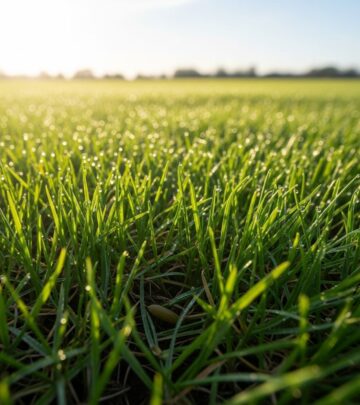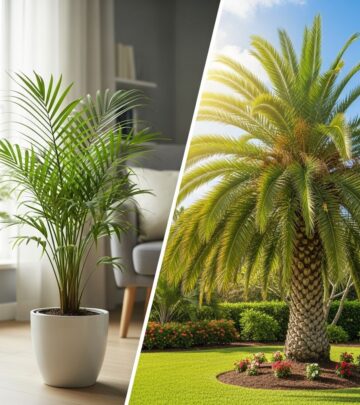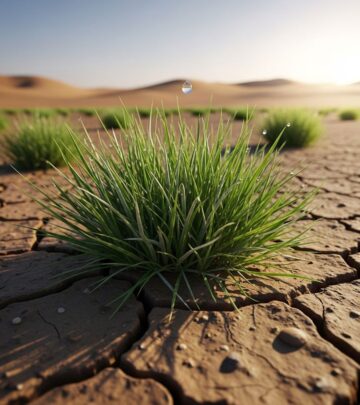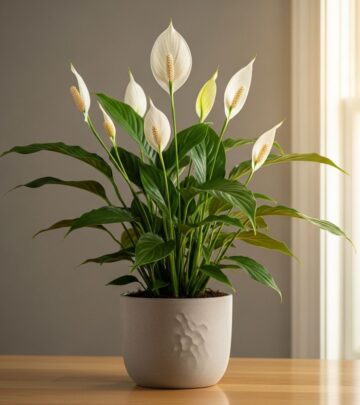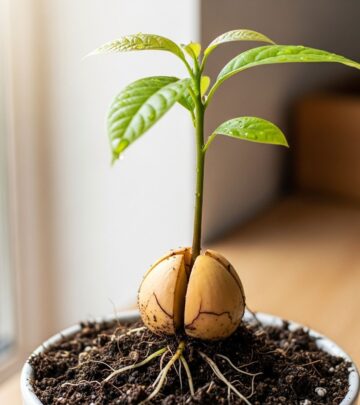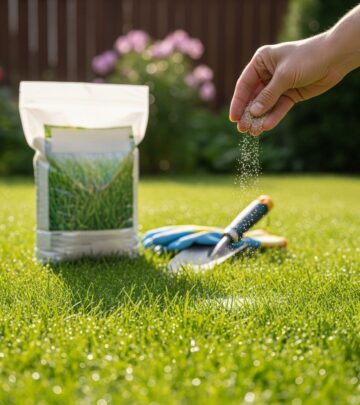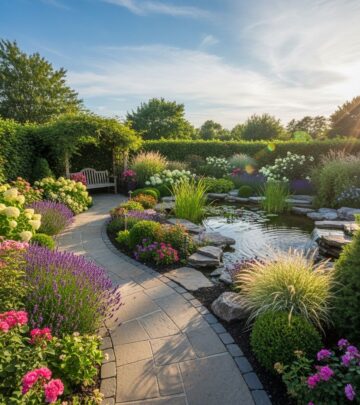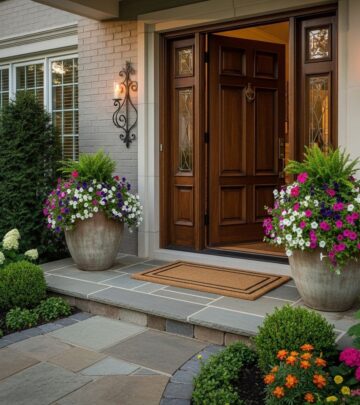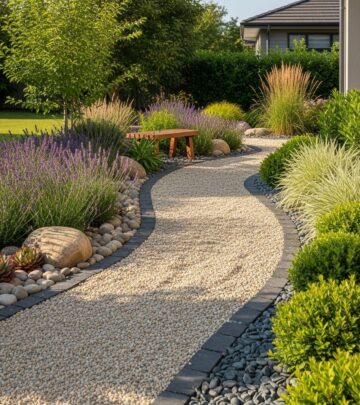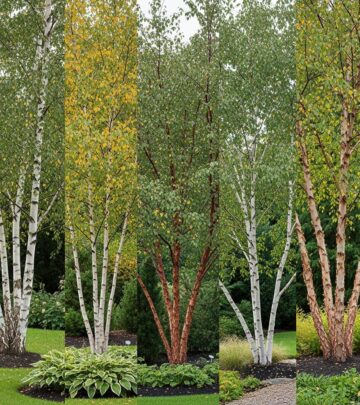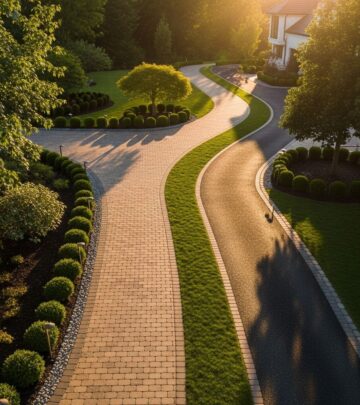7 Inspiring Landscaping Ideas From Northern California’s Wine Country
Integrating indoor living areas and drought-friendly greenery yields a calm garden.
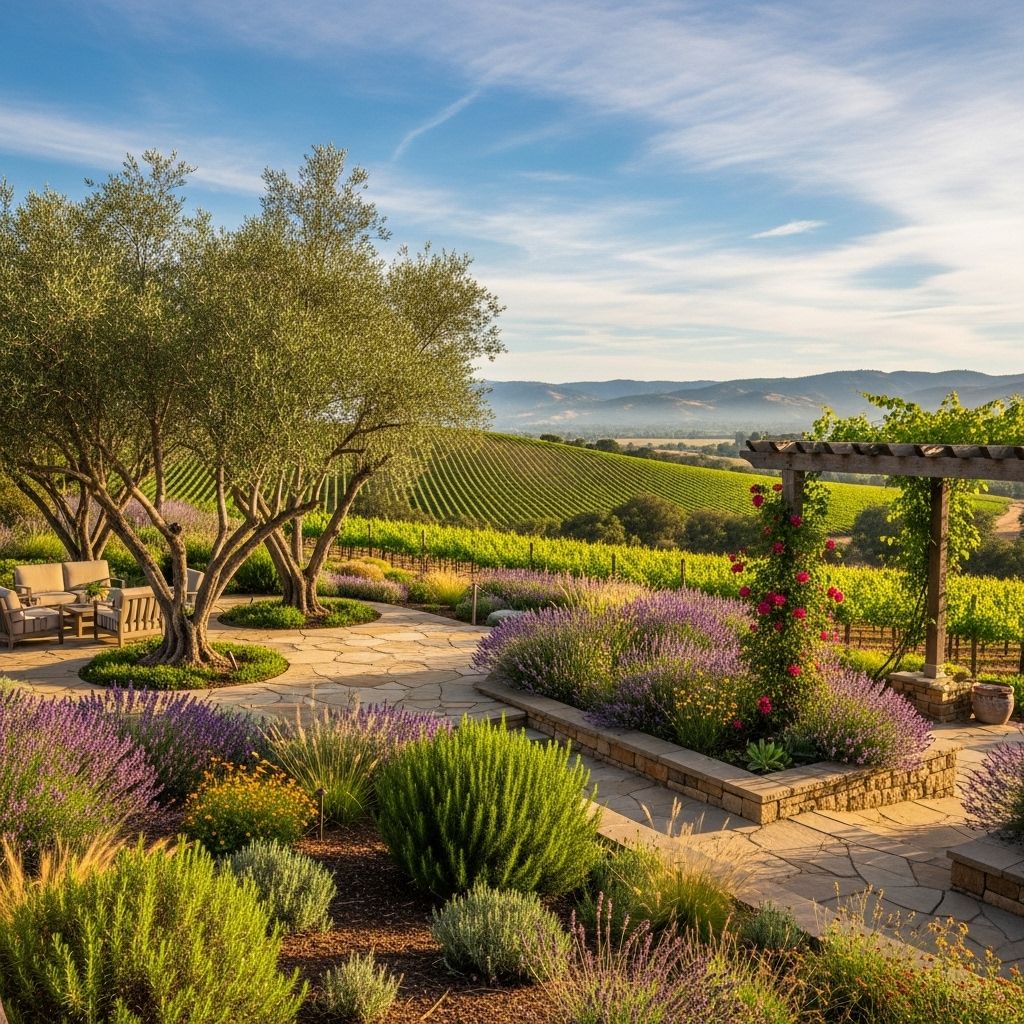
Image: HearthJunction Design Team
Northern California’s Wine Country, renowned for its rolling vineyards and sun-kissed hills, is not only a destination for oenophiles but also a wellspring of garden design inspiration. The region’s distinctive climate and terrain have fostered an outdoor lifestyle that balances luxury with sustainability. Whether you have sprawling acreage or a compact backyard, borrowing from the timeless landscape principles of California’s Wine Country can help you create a garden that is both beautiful and respectful of the environment.
1. Establish Seamless Indoor-Outdoor Connections
One of the defining features of Wine Country gardens is the fluid transition between indoor and outdoor living spaces. This connection encourages a lifestyle that blurs the boundaries between house and garden, making the outdoors an extension of the home.
- Wide doors and expansive windows: Install large openings or sliding doors that invite fresh air, sunlight, and garden views inside.
- Outdoor rooms: Create patios, breezeways, or verandas that function as alfresco dining and lounging areas, furnished for comfort and relaxation.
- Continuous flooring: Use similar flooring materials—such as stone or wood—both indoors and on patios to ensure a visual and functional flow.
Tip: Even in smaller gardens, placing a table or bench just outside the door can create an inviting transition.
2. Create Casual, Inviting Gathering Spaces
Wine Country gardens are meant to be enjoyed, not just admired. Emphasize spaces that bring people together for relaxation or entertainment under the open sky.
- Gravel courtyards: Channels the romance of Mediterranean gardens and classic European estates, and is practical for California’s climate. Gold-toned gravel or decomposed granite offers a warm, sunlit surface.
- Centrally placed tables: Anchor your gathering space with a large wooden table surrounded by simple chairs for family meals or impromptu wine tastings.
- Outdoor fireplaces or fire pits: Incorporate a focal point for evening gatherings, extending the outdoor season.
A gravel area, framed with drought-tolerant greenery or olive trees, evokes the sense of a vineyard retreat even if you’re miles from Napa or Sonoma.
3. Embrace Drought-Tolerant Plantings
The Mediterranean climate of Northern California mirrors that of many famous wine regions across the world, making drought-tolerant and native plants both practical and authentic for landscaping. Sustainability and water-wise gardening are foundational to Wine Country style.
- Lavender: Masses of fragrant lavender provide color, scent, and pollinator appeal with little need for irrigation.
- Salvias and sages: Offer long-lasting blooms and thrive in hot, dry conditions.
- Ornamental grasses: Add texture, movement, and a casual grace to gardens, softening hard edges and thriving with minimal care.
- Olive and citrus trees: Their silvery foliage and sculptural forms define the region’s look while withstanding drought.
- Native wildflowers: Encourage biodiversity and echo California’s natural meadows.
Tip: Arrange these plants in sweeping drifts or interplant for layered, naturalistic impact.
4. Add Shade and Structure with Pergolas and Arbors
Shade structures like pergolas, arbors, and trellises are both functional and decorative, providing shelter from the strong California sun and creating focal points in open spaces.
- Pergolas draped in vines: Train grapevines, wisteria, or roses over substantial wooden or metal frames. The leafy canopies provide dappled shade and change with the seasons.
- Rustic materials: Reclaimed wood or metal work well for pergolas and arbors, tying the built environment to the landscape.
- Defined spaces: Use pergolas to delineate dining areas, create garden ‘rooms,’ or enhance entryways.
Pergolas support the classic image of dining beneath the vines, surrounded by views of the garden or distant hills—a quintessential image of Wine Country life.
5. Design for the Four Seasons
Wine Country gardens reflect the rhythms of nature and the passage of time. Plan your landscape to highlight the beauty of each season, both for aesthetics and ecological health.
- Multi-season interest: Choose plants with staggered bloom times and those that offer autumn foliage or winter berries.
- Harvest themes: Reflect the region’s agricultural roots by letting fruit trees, grapevines, and edible gardens play a prominent role.
- Framing vistas: Use tree placement and plant layering to direct views and draw the eye to color shifts in the landscape during spring’s green flush or autumn’s bright golds and reds.
- Outdoor lighting: Enhance winter and fall evenings with subtle, warm illumination that makes the garden inviting year-round.
Let your garden come alive at different times of the year—celebrating spring blooms, summer shade, fall’s changing leaves, and winter’s quiet structure.
6. Let the Existing Landscape Guide Design
The landscapes of Wine Country feel integrated with their surroundings. A key principle is to minimize disruption to the natural setting, instead working with the existing topography, native plants, and geological features.
- Observe and adapt: Study what already thrives on your property—mature trees, natural meadows, local stone, and topography—and use these elements as the backbone of your design.
- Native stonework: Use locally-sourced rocks for retaining walls, paths, or seating, giving your garden a sense of place and permanence.
- Ecological transitions: Blur the boundaries between cultivated beds and wilder zones with native grasses and drought-tolerant perennials, providing habitat for wildlife and beneficial insects.
This site-responsive approach ensures your garden not only looks authentic, but also requires fewer resources to maintain and supports local ecology.
7. Layer Textures for Depth and Movement
Rich layering of textures and forms is a hallmark of Wine Country gardens, creating visual interest and a sense of abundance.
- Mix plant heights and shapes: Combine tall grasses, low groundcovers, sculptural shrubs, and climbing vines for a dynamic composition.
- Strong structure: Use repeating elements such as rows of lavender, topiary balls, or clipped hedges to provide rhythm and cohesion.
- Naturalistic layouts: Arrange plants in irregular groupings rather than rigid lines to reflect the appearance of a wild meadow or hillside.
Textural variety ensures that even in the quiet months, your garden maintains interest through contrasts of leaf, bark, and form.
Sample Plant Palette for a Wine Country-Inspired Garden
| Plant | Type | Key Feature |
|---|---|---|
| Lavender (Lavandula spp.) | Perennial | Fragrance, drought-tolerance, color |
| Olive Tree (Olea europaea) | Tree | Evergreen, architectural form |
| California Poppy (Eschscholzia californica) | Annual/Wildflower | Vibrant color, native |
| Feather Grass (Stipa spp.) | Ornamental Grass | Soft movement, drought-tolerant |
| Salvia (Salvia spp.) | Perennial | Long blooming, pollinator-friendly |
Design Tips For an Authentic Wine Country Garden
- Focus on simplicity: Keep color palettes and plant choices restrained for a calm, restful atmosphere.
- Prioritize eco-friendly practices: Compost, mulch, and limit lawn area to save water and nurture healthy soil.
- Incorporate containers: Potted citrus, herbs, or flowers in terra cotta or aged stone add Mediterranean flair to patios and doorways.
- Invite wildlife: Select native plants, install birdbaths or bee hotels, and avoid pesticides to support beneficial insects and birds.
- Frame views: Use hedges, trees, or constructed walls strategically to guide sightlines to the most pleasing garden or landscape features.
Frequently Asked Questions
Q: Do I need to grow grapes in my garden to achieve a Wine Country aesthetic?
A: No. While grapevines enhance the theme, the essence of Wine Country gardening is defined by sustainability, Mediterranean-style plantings, and a seamless indoor-outdoor living ethos. Use locally appropriate, drought-tolerant plants for authentic results.
Q: What is the best ground cover for a Wine Country-inspired courtyard?
A: Crushed gravel or decomposed granite is ideal. These materials are low-maintenance, permeable, and evoke the ambiance of classic Mediterranean gardens.
Q: How can I create shade without blocking garden views?
A: Install pergolas or arbors with vining plants such as grape, wisteria, or climbing roses. These structures provide dappled shade while preserving airy sightlines and a sense of openness.
Q: Are Wine Country gardens suitable for smaller yards?
A: Absolutely. Even a petite garden can feature an inviting gravel patio, Mediterranean shrubs, and potted olive trees to evoke the relaxed charm of California’s vineyards.
Q: How can I maintain a low-water garden year-round?
A: Group plants by water needs, mulch deeply, and choose native or Mediterranean-adapted species that naturally thrive with little supplemental irrigation.
Key Takeaways for Wine Country Landscape Design
- Prioritize sustainability by using drought-tolerant and native plants.
- Design for flexibility, with spaces that accommodate gatherings or quiet relaxation.
- Celebrate the seasons through plant selection and garden structure.
- Connect visually and physically with the natural surroundings to create a sense of place.
- Layer textures and use enduring materials like gravel, stone, and wood for timeless appeal.
Northern California’s Wine Country offers a landscaping language that is both practical and poetic—a blend of refined design and wild beauty. By embracing these seven principles, you can create an outdoor space that celebrates nature, sustainability, and the joys of garden living.
References
- https://www.houzz.com/magazine/get-the-look-california-wine-country-garden-style-stsetivw-vs~74666151
- https://www.gardenista.com/posts/7-landscaping-ideas-borrow-northern-californias-wine-country/
- https://www.pinterest.com/pin/294211788177639808/
- https://www.gardendesign.com/california/bay-area.html
- https://www.houzz.com/photos/wine-country-escape-transitional-landscape-san-francisco-phvw-vp~38799032
Read full bio of Srija Burman

